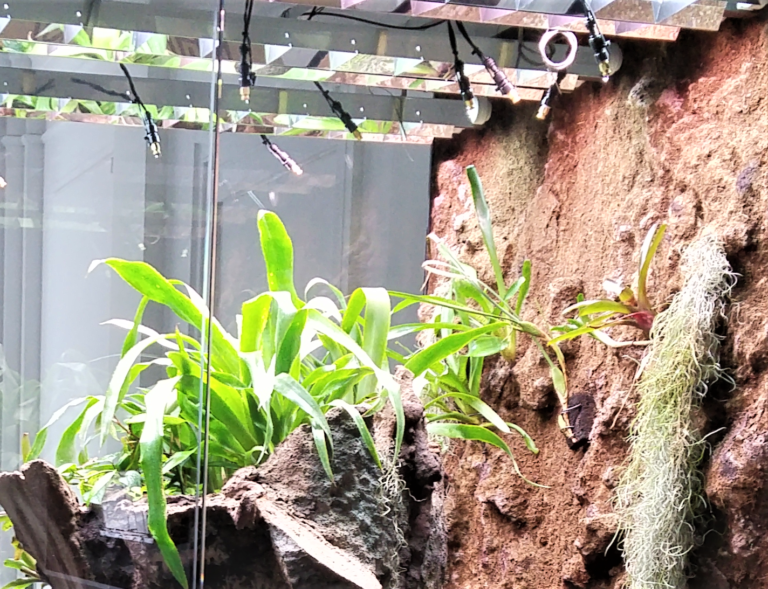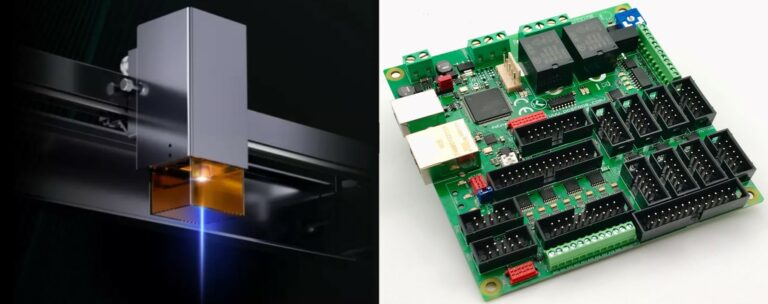A slip ring test? What does this have to do with PoKeys?
Well, we needed a cheap slip ring for one of our test projects and we got some from China. Slip rings are devices that transfer electrical signal from stator (non-rotating part of the device) to the rotor (rotating part of the device) using mechanical contacts (usually some sort of brushes). It is therefore of outmost importance that the device does not loose electrical contact between the two moving parts. Questioning the quality of the device, we wanted to see how much of contact bouncing there really is.
The slip ring test setup
Our slip ring has 6 separate contacts going from the stator to rotor. We wanted to count how many times we loose contact on any of those contacts as we rotate the slip ring rotor.
We used USB I/O controller device for this purpose – it supports counting very fast events using digital counters on selected pins. Therefore, we selected one of the contacts and connected it to the GND, while others were connected to separate digital counter inputs (we selected pins 5, 6, 9, 11 and 15). We setup the PoKeys device to count rising and falling edge events on each of those inputs.
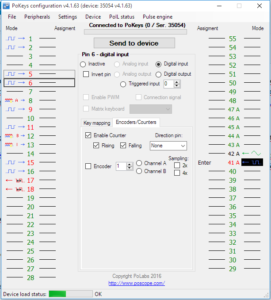
All rotor wires were then bundled together and soldered to make a contact between them, as shown on the picture below.

This works due to the fact that all PoKeys input pins already have a built-in pull-up resistor that pulls the signal high (to +3.3 V). These are usually used to aid in connecting switches – one has to connect a switch between the ground (GND) pin and the PoKeys input pin. The pull-up resistor will pull the input pin to a logic level 1 if the switch contacts are open. If switch is pressed, there is a short between the PoKeys pin and GND, resulting in PoKeys device registering a logic level of 0. In case of switches, one can invert the input pin status to correctly represent the switch state. However, in the case of this test, we don’t really care about the actual state of the pin, but more of the changes.
The ground signal goes through the slip ring to the rotor, where it is connected to other 5 signals that go back to PoKeys device through the slip ring. If any of those connections is broken, we will see an event (or multiple events if ground signal is interrupted).
Experiment
Now, all we had to do is to connect PoKeys device to a PC and open PoKeys application. As we rotate the slip ring rotor, PoKeys will register signal bounces if they happen.
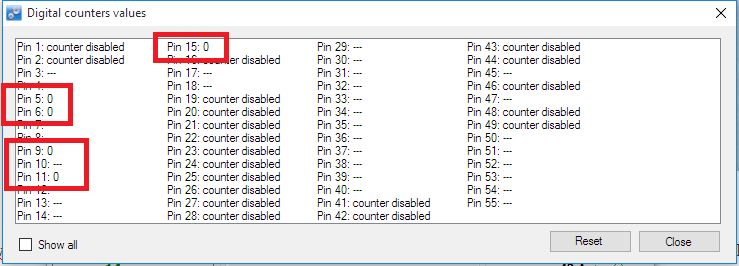
Fortunately for us (unfortunate for this demonstration), the slip ring does not produce any signal bounces at all. We rotated it, pushed against the rotor, dropped it to a table…
In order to make sure that the presented method works at all, we disconnected one of the wires. The act of unscrewing the terminal and swiftly removing the wire made PoKeys device register a whooping 9547 events!!
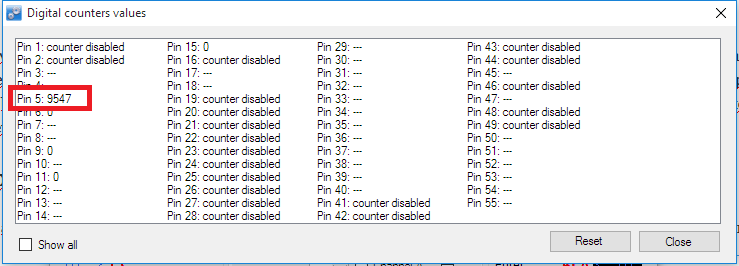
Conclusion
As noted, we were not able to make the cheap slip ring to produce any signal bouncing at all. We also demonstrated that Digital counters as a very useful feature of the PoKeys device that can be used to count very fast events if needed.
Here are some of our electronics products, please check-s products:
- Stepper motor driver
- Stepper motor driver-complete explanation
- USB CNC Controller-PoKeys57CNC
- Homing sensor-PoHome1IRNPN
- Plasma voltage divider
- plasma cutter troubleshooting guide
- Bipolar stepper motor driver


